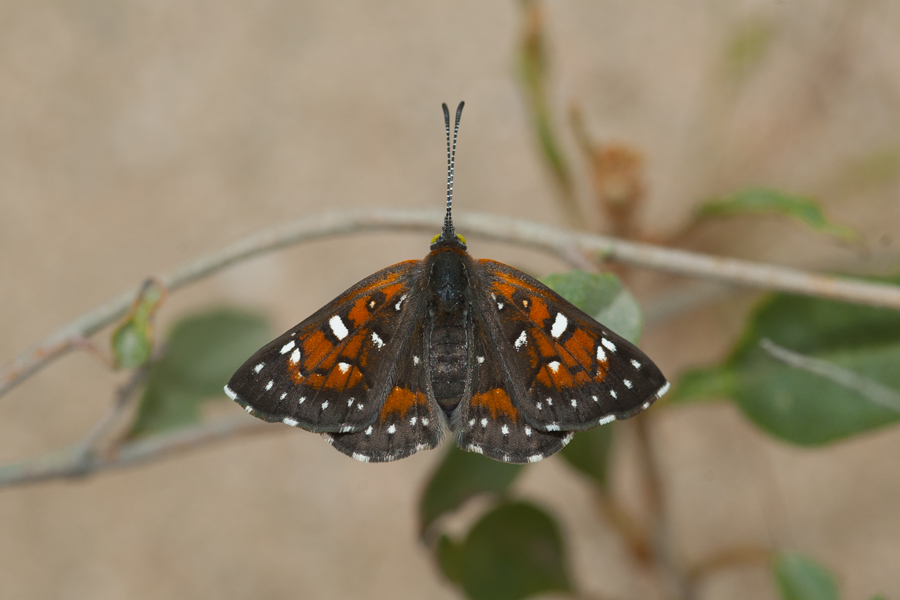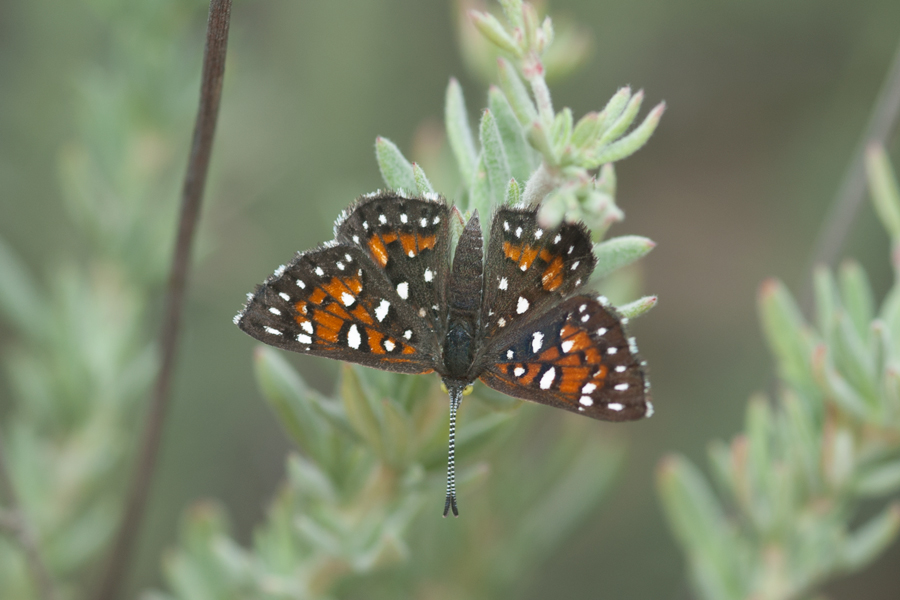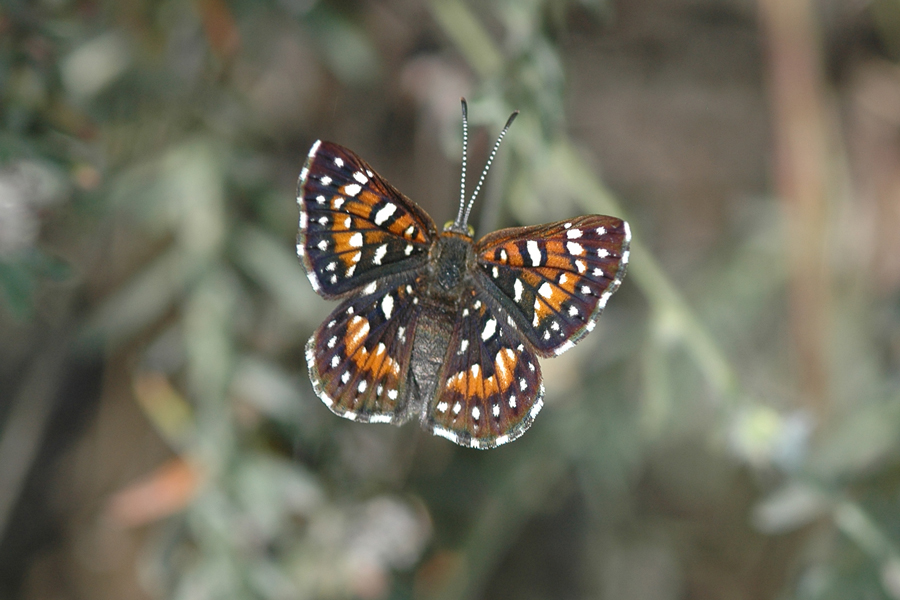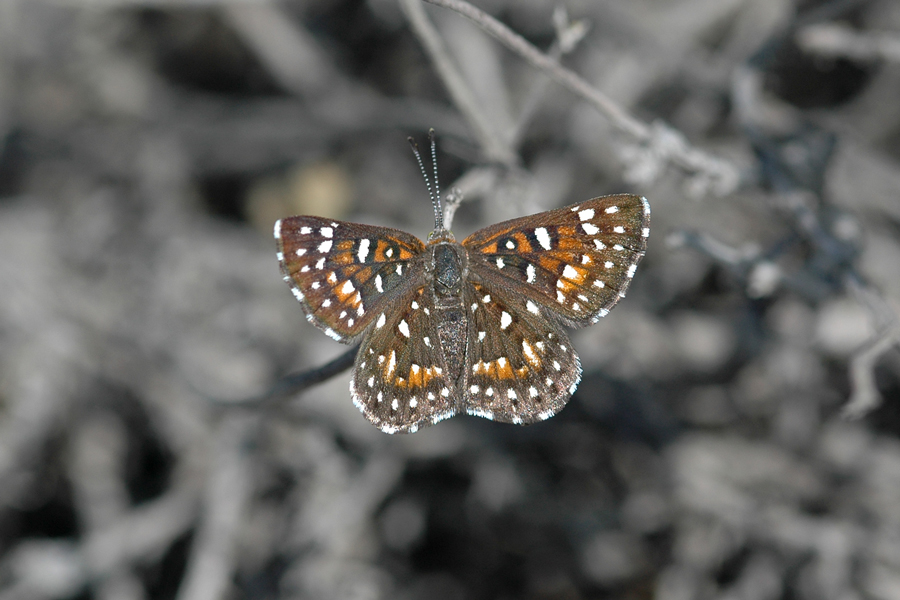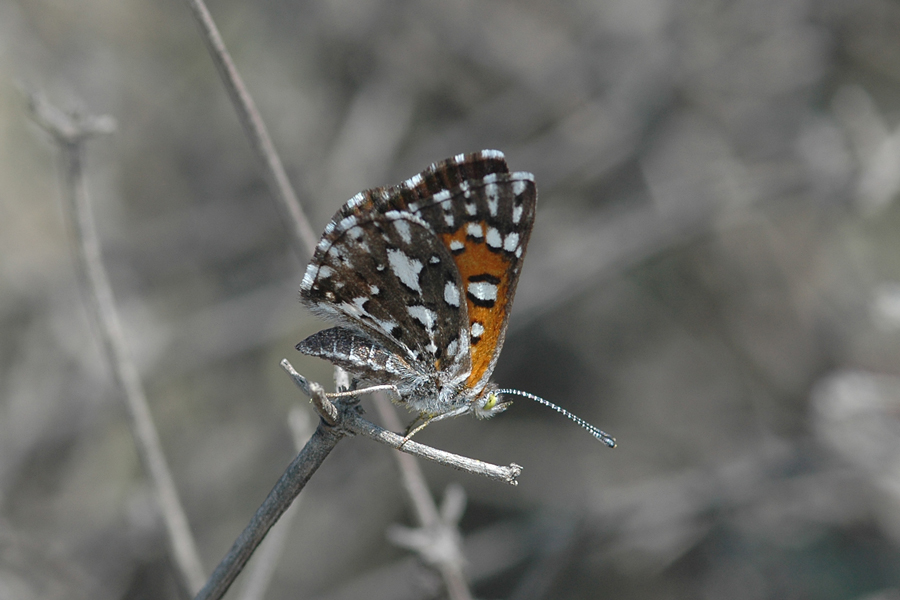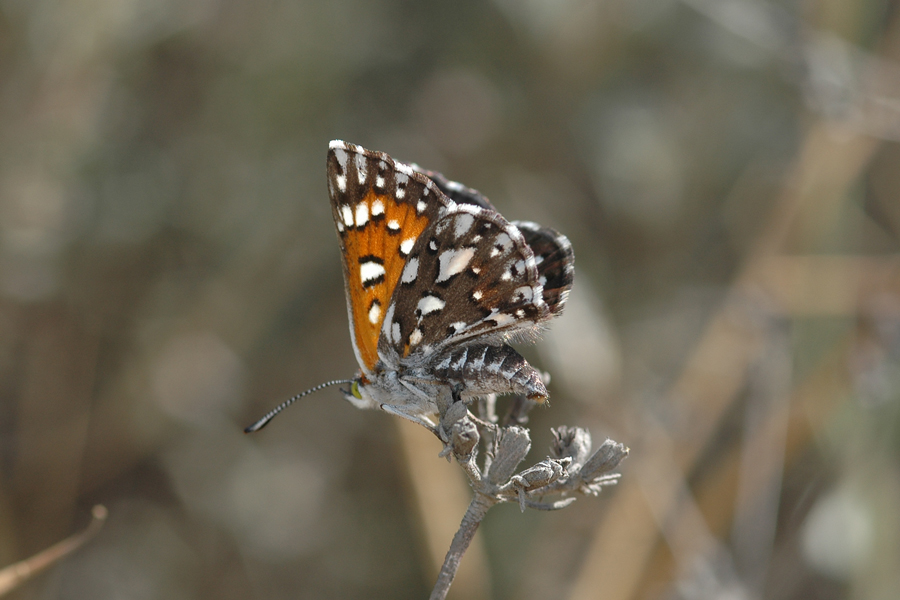Apodemia virgulti nigrescens
Dark Metalmark
A strange population of mormo-complex metalmarks is known only from a sandy, vacant area with Eriogonum fasciculatum (and a lot of trash) between rail yards in Colton off the 10 Freeway at Pepper Avenue. I went there several times between 2007 and 2011, but when I stopped there in 2017 it was fenced off; it's apparently even less accessible now (2023). Hopefully there are nearby areas with this dark metalmark, because a single population of this size seems very precarious.
UPDATE: It seems this land was acquired in 2019 by the Rivers and Lands Conservancy, and clean-up and preservation work have been underway since. So that's good news.
Subspecies nigrescens is noted mostly for its dark appearance, but there are a couple of other things to know. First, that it is multiple brooded, with a first flight in March or April, and a final flight ending in October or November. Whether there is more than one flight in between, I am not sure. Second, it uses California buckwheat, Eriogonum fasciculatum. Third, it has a very unusual population density. As the original description* notes, numerous individuals fly at the site, which is under an acre in size, and Greg Ballmer counted over 80 larvae on a single buckwheat plant in 30 minutes of searching, whereas only one or two would be expected in a virgulti population. This extreme density and the dark phenotype underscore the distinctiveness of the metalmarks holding on in their little corner of the world in Colton.
* John F. Emmel and Thomas C. Emmel, "Two New Geographically Restricted Subspecies of Apodemia mormo (Lepidoptera: Riodinidae) from the Vicinity of San Bernardino, California," in Systematics of Western North America Butterflies (1998), pp.796-8.
